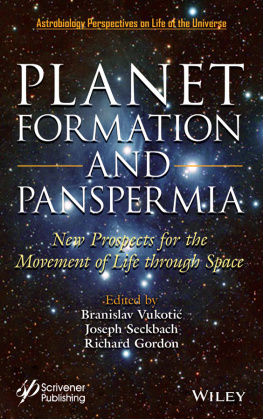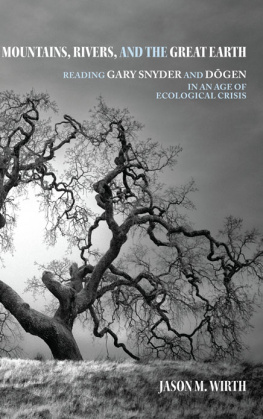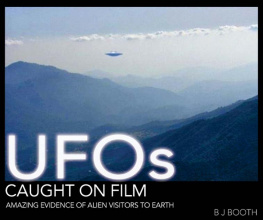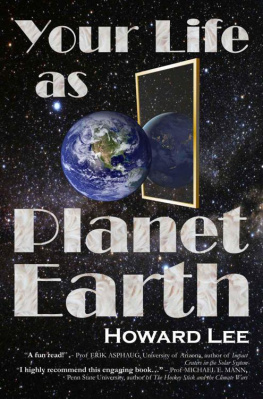
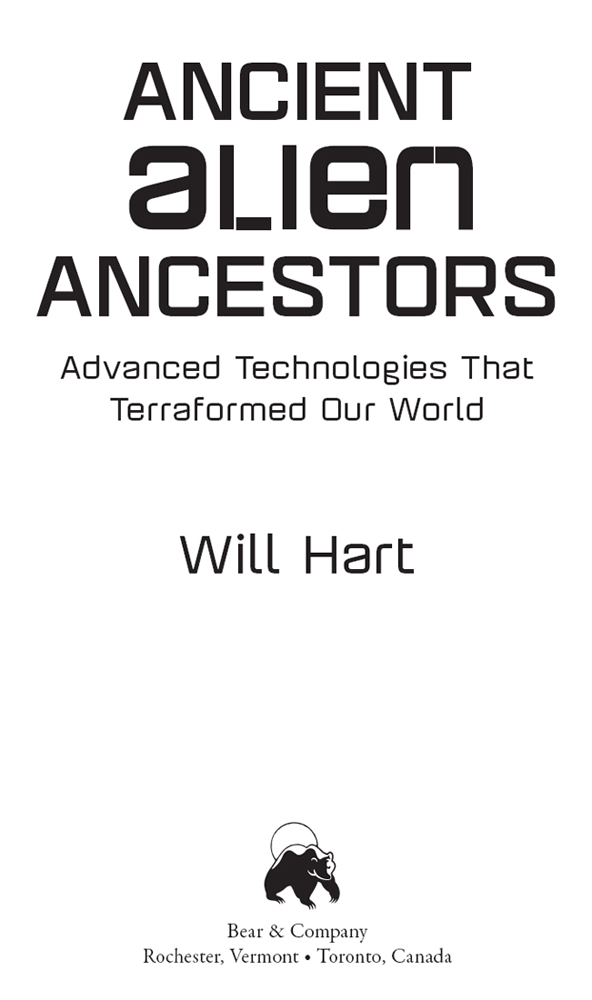
INTRODUCTION
The Contact and Colonization of the Earth
I see some kind of intelligent being, like us, skipping around the universe from planet to planet as, lets say, the South Pacific Indians do on the islands, where they skip from island to island.... I think thats what the [alien] space program is all about.
ASTRONAUT AL WORDEN
This is the second book in this series. The first volume, The Genesis Race, primarily examined artifacts, sacred texts, and oral traditions from human history that tell of gods descending from outer space to Earth. These aliens gods, the Genesis Race, had as their mission to seed life on the planet and to extend their civilization through the creation of humankind.
In this volume I present the scientific basis for the theory of directed panspermia, which posits that life, via microorganisms, was shipped to Earth by an extraterrestrial civilization.
The theory was first proposed by the late Nobel Prizewinning microbiologist Sir Francis Crick, cofounder of the shape and design of the DNA molecule in the 1950s.
This book makes it clear that the concept of The Genesis Race is a theoretical framework that goes beyond the general theory and shows that there is extensive ancient and modern-day evidence of extraterrestrial involvement, contact, and colonization of the earth.
This series is not just a simple cataloging of historical and present-day enigmas and anomalies.
I examine the current state of astronomy, space exploration, astrophysics, biology, genetics, and modern-day unidentified flying object (UFO) sightings and contacts. Ancient oral traditions and texts are replete with accounts of contact with this advanced civilization. It is important to establish the fact that our human ancestors clearly made every attempt to convey for posterity the gist of their experiences with this race.
However, since they lacked any knowledge of sophisticated technology the best they could do was to describe the spacecraft as bright, shiny, luminous clouds or fiery chariots.
In the Bible, Ezekiels portrayal of the craft that landed in front of him is perhaps the clearest account ever given of an ancient UFO. He tells of a humanlike man he calls the Lord sitting inside the craft in a high-backed chair, which he describes as a throne.
For some curious reason this fact has been lost to both Judaism and Christianity. In fact, the Bible is full of references to UFO sightings and encounters, as are the oral traditions of ancient cultures such as the Dogon of northern Africa.
The recent, postWorld War II rise in UFO sightings by highly credible witnesses is consistent with our earliest oral traditions and written accounts.
Directed panspermia (which I shall refer to as Cosmic Ancestry II because I have included the evidence of ET visits in the form of enigmatic, archaeological evidence to the original theory) is simply the idea that the seeds of life originated elsewhere and were deliberately shipped to earth from an extraterrestrial planet long ago. To that basic concept, I have added the evidence in support of the notion that these same extraterrestrials actually set foot on earth and intervened in human history. Cosmic ancestry and extraterrestrial visitation are not new phenomena that exist outside the bounds of science. Today, most scientists agree that the earth is not an exceptional planet, that it probably is not the only one in the universe that houses life and intelligent beings.
Hundreds of millions, if not tens of billions of planets in our galaxy alone are now projected to contain some form of life, and some of them have likely produced civilizations that evolved long before things got started on Earth.
In fact, directed panspermia (Cosmic Ancestry II), via the Genesis Race, only requires that one civilization in the entire universe triumphed over every obstacle and has been able to travel the vast expanses of space-time to transmit life to other worlds.

SECTION I
DIRECTED PANSPERMIA
The Seeding of Our World
Cosmic Seeds of Life
The notion that life originated elsewhere in the universe and later arrived on Earth is not the stuff of any science fiction writers imagination. Today it is a solid scientific theory that explains how life came to Earth from the cosmos.
The first documented mention of the idea appears in the writings of the fifth-century-BCE Greek philosopher Anaxagoras. He called his thesis panspermia, a Greek term that means seeds everywhere.
More than two millennia later, on April 9, 1864, the French chemist Louis Pasteur reported his experiment disproving spontaneous generation. This was a devastating blow to Charles Darwins theory regarding the origin of life on Earth, which held that life began as a direct result of spontaneous generation. In other words, nonliving things spontaneously produced living things.
Then, in the 1870s, the British physicist Lord Kelvin (William Thomson) and the German physicist Hermann von Helmholtz reinforced Pasteurs findings and argued that life might have originated in space and been transported to Earth.
Next, in the first decade of the 1900s, the Swedish chemist and Nobel laureate Svante Arrhenius theorized that bacterial sporespropelled through space by light pressurewere the mechanism that seeded life on Earth.
In his day, the concept was pure scientific speculation because it had not been proven that life-forms could survive the extreme conditions of interstellar space. In fact, most scientists at the time were not convinced that any could. However, science has since shown that such life-forms, called extremophiles, do indeed exist.

Fig. 1.1. Life from the Cosmos. Photo courtesy of NASA.
In the 1960s, Sir Fred Hoyle and Chandra Wickramasinghe were trying to identify the contents of interstellar dust by finding something that would match its infrared signature. Hoyle was an astronomer and Wickramasinghe an astrobiologist, and neither was out to prove the tenets of panspermia.
More than three decades ago Hoyle and Wickramasinghe began arguing the case for the widespread occurrence of microbial life in the universe. They drew their conclusions from studies of interstellar dust grains and found a vast array of molecules to be present in space, which they believed to represent components that may have derived from biology.
When they began working on this problem in the early 1960s, the standard theory posited that the spectrum of cosmic dust could be adequately explained as obtained from nonliving graphite grains. A new look at the interstellar dust permeating the universe has revealed hints of organic matter that could be created naturally by stars, scientists say.
Researchers at the University of Hong Kong observed stars at different evolutionary phases and found that they are able to produce complex organic compounds and eject them into space, filling the regions between stars.
But an imperfect match between the theoretical and actual spectrumsand an implausible account of the formation of the grainspushed Hoyle and Wickramasinghe to explore other possibilities. In their workand that of other astronomers and astrobiologistsmolecules that were more closely related to biological entities began to enter the picture.


